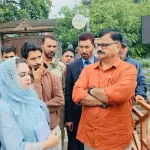Localisation and the advent of technological improvisations have lead to the progression of the human society towards the economic boom without having any understanding of the identity and roots that have shaped the humans and hence the societies.This gap has posed a serious challenge to the heritage all over the globe. Either people see it as an insignificant entity occupying space that is meant for the parking lots and concrete jungles or a commodity meant to be exploited for the economic gains without realizing that sustainability and sympathetic reuse is the only principle that can sustain it for the comprehensive development plans and up gradation of the stakeholders.
The progression of the human society and the quest for overpowering nature has led to the insensitivity towards heritage and set the momentum for the vandalisation of these heritage assets. It is in this background for the larger interests of the stakeholders that is the human race and to sensitize the entire human fraternity comprising of different nations-ICOMOS(International Council on Monuments and Sites) on 18 th April 1982 resolved to observe this day (18th April) as the “ International Day on Monuments and Sites)” popularly known as “World Heritage Day”.Heritage Commemoration should develop a sense of preservation and conservation of the diversified and complex forms of heritage places like living landscapes, which are tangible carriers of the memory of a part of the human experience.It is through their authenticity and integrity that they lead to commemoration and transmission of values that includes history. This commemoration has variety of forms like monumental sculpture, vernacular tradition, urban historic city areas, ruins whose typonymy leads to celebration of event or individual.
The choice of this theme is partly inspired by the centennial in 2014 of the beginning of the Great War of 1914-18. Due to the unprecedented scale of violence and destruction and its international reach, this great tragedy of the Modern era led societies and nations to adopt a new form of commemoration on the notion of scientific approach and individual identity of the innumerable victims rather than events and heroic personalities.This has led to the focus towards the creation of a distinctive heritage of monuments and sites, meant for the purpose of sole commemoration. Jammu and Kashmir has been in the forefront of the ethno-religious conflict that has led to the competitive and conflicting interpretation of heritage as vested interests have not only altered the heritage concept but indulged in selective vandalisation of the shared assets that should have otherwise been inclusive keeping in view all the stakeholders.
In such a scenario our approach towards heritage should be shaped by the following fundamental questions:
• What is happening to heritage?
• What heritage means to me?
• What can I do for heritage?
Answers to these questions will pave the way for devising responsible heritage conservation and marketing strategies.The heritage strategies should focus on the importance of heritage conservation and opportunities to share experiences of stakeholders. The need is to include civic bodies and municipalities for heritage conservation.This approach has worked in cities of Delhi, Bankok, Yangoon and seoul.
UT of Jammu and Kashmir should focus on the following three factors:
• Social factors
• Poltico-economic factors
• Planning factors.
These factors should be in tune with urban development.It will lead to comprehensive restoration and marketing of urban historic areas like Mandi Mubarak in the Jammu region of the UT, where lack of these factors in the policy premise has led to inflated costs of conservation and incompatible restoration work and exposing a premature conserved area to tourism.It is a sad commentary on the part of the consultancy groups that were in the forefront this project. Besides no thought was given to the carrying capacity. Conservation of heritage should have local sustainability by devising a tourism plan having economic value. Only then it can lead to sustainable heritage tourism. Carrying capacity and multiplier effect should be the cardinal principles of the heritage value of the destination.
A number of factors facilitate and help to promote heritage conservation and approach to heritage in the spheres of governance, education, technology and finance. Within this framework, the role and involvement of of banks and financial institutions in assisting borrowing for protection and development of heritage assets is receiving increasing attention.
Linkages between heritage conservation and economic development, particularly in the context of promoting heritage tourism are still being understood, leading banks to think in terms of funding urban heritage conservation projects that accelerate social and economic development and meet technical, economic, institutional, financial and environmental review criteria.
Thus our approach towards heritage should be shaped by multidisciplinary approach that gives credence to heritage assets in terms of sustainability for wider inclusive socio-political and economic development.
Heritage Issues in Jammu & Kashmir
Leave a Comment Leave a Comment





